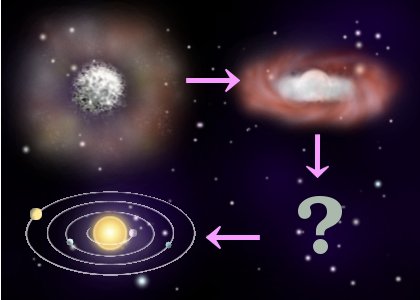News & Topics
@
|
We updated "Members." (May 26, 2021)
Mr. Ido, Mr. Goda, Mr. Miyazaki, Ms. Kondo and Ms. Suematsu made presentations at 2019 Spring annual meeting of The Astronomical Society of Japan. (Mar 14-17, 2019)
A paper by Mr. Goda "A New Method for Calibration of Gain Variation in a Detector System" was published in The Astronomical Journal. (Nov 30, 2018)
Prof. Shibai and Mr. Miyazaki made presentations at 2018 Autumn annual meeting of The Astronomical Society of Japan. (Sep 19-21, 2018)
Prof. Shibai and Mr. Koshimoto made presentations at 2017 Autumn annual meeting of The Astronomical Society of Japan. (Sep 11-13, 2017)
A paper by Mr. Itoh "Pupil Masks for Spectrophotometry of Transiting Exoplanets" was published in The Astronomical Journal. (Aug 17, 2017)
A paper by Mr. Nagakane "MOA-2012-BLG-505Lb: A Super-Earth-mass Planet That Probably Resides in the Galactic Bulge" was published in The Astronomical Journal. (Jun 30, 2017)
A paper by Mr. Koshimoto "MOA-2016-BLG-227Lb: A Massive Planet Characterized by Combining Light-curve Analysis and Keck AO Imaging" was published in The Astronomical Journal. (Jun 9, 2017)
A paper by Mr. Hirao "OGLE-2013-BLG-1761Lb: A Massive Planet around an M/K Dwarf" was published in The Astronomical Journal. (Jun 8, 2017)
We updated "Members." (Apr 5, 2017)
Associate Prof. Sumi won "The Hayashi Chushiro Prize 2016" !! (Mar 17, 2017)
Associate Prof. Sumi was nominated to "The Hayashi Chushiro Prize 2016" !! (Feb 14, 2017)
"The
current progress in optical adjustment system for FITE was posted." (Feb 7, 2017)
"The
current progress in an FIR array detector was posted." (Feb 6, 2017)
"We moved to a new FITE lab." (Dec 15, 2016)
A paper by Mr. Koshimoto "OGLE-2012-BLG-0950Lb: The First Planet Mass Measurement from Only Microlens Parallax and Lens Flux" was published in the Astrophysical Journal. (Dec 14, 2016)
"Prof. Shibai made a presentation at a symposium of ISAS." (Nov 2, 2016)
"An article on FITE was published in a journal "sternzeit." (Oct 21, 2016)
" The new centroid control system for FITE (Far-Infrared Interferometric Telescope Experiment) was posted. " (Oct 13, 2016)
"Prof. Shibai, Mr. Itoh and Mr. Oyama made presentations at 2016 Autumn annual meeting of The Astronomical Society of Japan." (Sep 14-16, 2016)
"
A paper by Assistant Professor Matsuo on development of a new method for spectroscopy of extrasolar planets with space-based telescope was published in the Astrophysical Journal."
"
A paper by Mr. Hirao on discovery of a new saturn-mass planet orbiting around a M-type star with microlens method was published in the Astrophysical Journal."
"Discovery of a Terrestrial Planet in a Binary-star System Located in 3000 Light Years Away from Us " (July 4, 2014)
"ALMA Discovers a Formation Site of a Giant Planetary System " (Jan 17, 2014)
" Subaru Telescope's Imaging Discovery of a Second Jupiter Shows the Power and Significance of the SEEDS Project" (August 4, 2013)
" Direct Infrared Image of an Arm in Disk Demonstrates Transition to Planet Formation" (Feb 7, 2013)
@
" Direct Imaging of a Super-Jupiter Around a Massive Star" (Nov 19, 2012)
" Discovery of a Giant Gap in the Disk of a Sun-like Star May Indicate Multiple Planets" (Nov 8, 2012)
"Discovery of an Exoplanet Candidate Orbiting a Sun-Like Star: Inaugural Observations with Subaru's New Instrument HiCIAO" (December 3, 2009)
"Astronomers successfully obtained images of an extra-solar planet" (May 21, 2009)
"Water ice in the young planetary system - future ocean of the planets?" (Feb 17, 2009)
|
About us
Research Area
We study astronomical phenomena by infrared observations (including visible light and submillimeter
wavelengths) using ground-based telescopes and space telescopes, and develop instruments for such
observations. In particular, we focus on understanding the formation process of exoplanets and aim to detect
extrasolar biosignatures in the future. We are also conducting research on optical and near-infrared identification
of gravitational wave sources (black holes and/or neutron star mergers), galaxy structure, and dark matter.
MOA (Microlensing Observations in Astrophysics)
More than 4,000 exoplanets have been discovered so far, but few of them are as small as the Earth outside the snow line,
which is important for planet formation research. Therefore, we are using gravitational microlensing to search for such exoplanets.
We are using MOA-II, a dedicated 1.8m wide-field telescope in New Zealand. We collaborate with Nagoya University, Auckland University,
Massey University, Canterbury University, and NASA.
For more information, click here.
PRIME(Prime-focus Infrared Microlensing Experiencej
A new wide-field telescope in the Republic of South Africa will be built to conduct
microlensing planet survey in the near-infrared. The PRIME project is a collaboration with Astrobiology Center,
Nagoya University, Massey University, SAAO, University of Maryland, JAXA, and NASA.
For more information, click here.
ROMAN(Nancy Grace Roman Space Telescopej
We participate in NASA's Roman mission scheduled for launch in 2025 to conduct microlensing planet survey from space.
The goal is to reveal the distribution of all planets outside the Earth's orbit and to understand the process of
planetary system formation. A joint research with JAXA, NAOJ, and NASA.
Searching for biosignatures
In preparation for NASA's proposed very large space telescope mission (OST, LUVOIR) in the 2030s,
we are investigating and demonstrating technologies for the search for life outside the solar system.
In collaboration with NASA, we are developing a highly stable instrument for use onboard satellites to measure
the atmospheric composition of exoplanets and find traces of life (biosignatures) using direct imaging and
transit spectroscopy method.
We study exoplanets, stars, and protoplanetary disks by using space and ground-based telescopes such as Kepler,
TESS, Gaia, and ALMA. In particular, we aim to reveal the formation and evolutionary processes of various planetary systems
through detailed studies of the orbital structures of transiting planetary systems.
Back To Top


